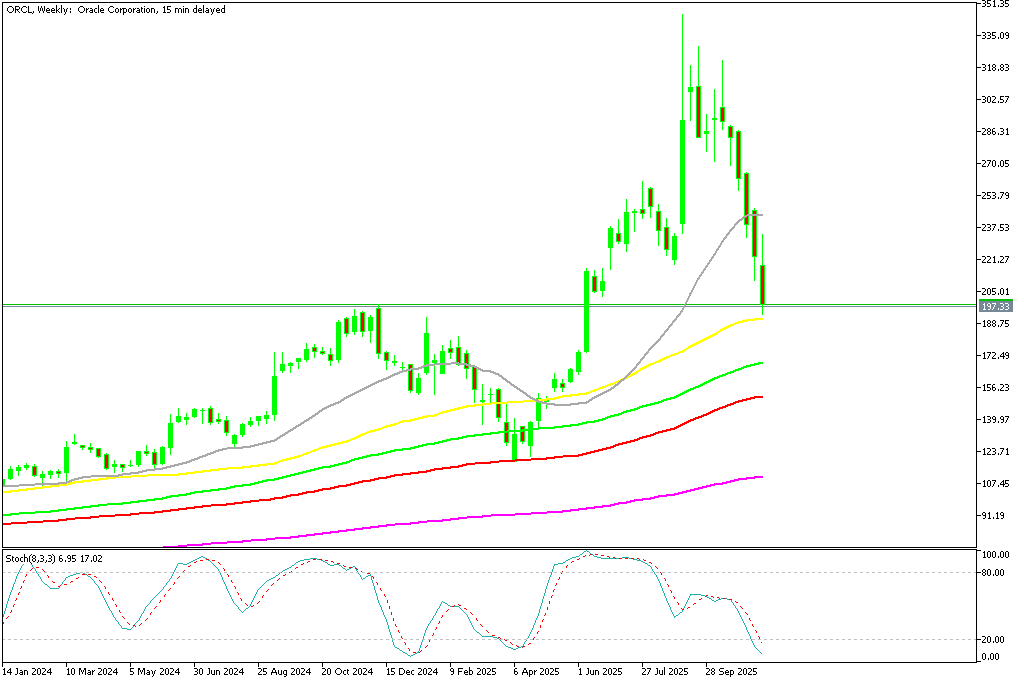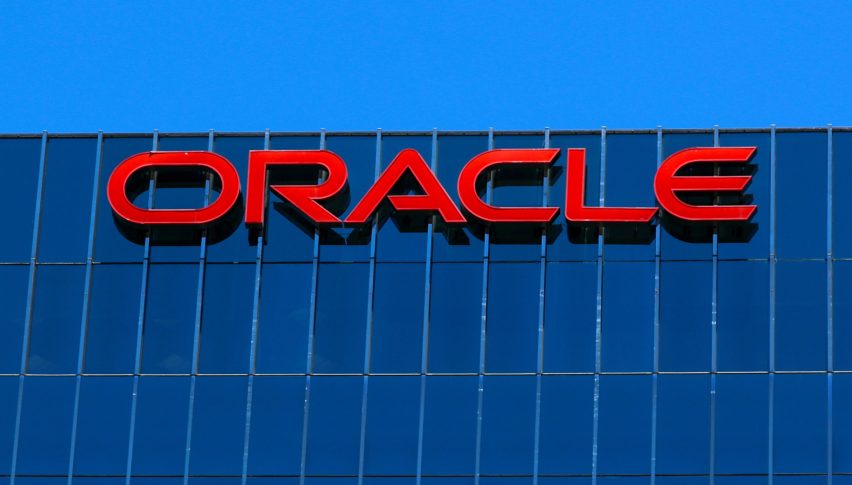Oracle Under Pressure on AI and Cloud Questions – ORCL Stock Breakdown or Rebound?
Oracle’s latest pullback highlights growing investor unease over its cloud and AI ambitions, as weakening momentum and rising costs overshad

Quick overview
- Oracle's stock has experienced significant selling pressure, dropping below $200 after a brief surge, indicating waning investor confidence.
- Rising insider selling and deteriorating technical indicators have raised concerns about the company's near-term prospects.
- Despite a recent AI partnership announcement, market response has been muted, as investors prioritize earnings and margins over future potential.
- Oracle faces increasing competition and rising costs, leading to skepticism about its ability to scale its AI ambitions profitably.
Oracle’s latest pullback highlights growing investor unease over its cloud and AI ambitions, as weakening momentum and rising costs overshadow its long-term narrative.
Selling Pressure Deepens After Short-Lived Bounce
Oracle’s share price has remained under heavy pressure since mid-October, suffering a steep decline through November and closing below the $200 mark by the end of last week. A brief surge towards $234, driven by enthusiasm following Nvidia’s earnings update, quickly lost steam as sellers returned in force. By Friday, the stock had fallen another nine percent, underscoring how fragile confidence in the name has become.
What was once viewed as a durable upward trend now appears to be a broader reversal, as optimism around Oracle’s place in the cloud and AI race continues to fade.
Insider Activity Raises Fresh Questions
Concerns have been compounded by a noticeable rise in insider selling. While these transactions do not always point to imminent trouble, their timing — alongside a weakening share price — has rattled investors. For many, it suggests uncertainty at the highest levels and reinforces the impression that near-term prospects may not be as strong as previously hoped.
In an already cautious market environment, any hint of internal doubt has the power to accelerate downside momentum.
Technical Structure Signals Further Risk
Oracle’s technical picture has deteriorated significantly in recent weeks. After peaking above $345 earlier this year, the stock has retraced close to forty percent and is now hovering near the $210 zone. It has dropped below its 20-week simple moving average, a level that had provided consistent support for much of 2024.
ORCL Chart Weekly – Sellers Test the 50 SMA
Meanwhile, the 50-day and 100-day moving averages have flattened and begun to turn lower, often an early sign that a trend has definitively shifted. Attention is now turning to the $190 area, where the 50-week moving average sits. A decisive break below that level could expose the stock to a deeper fall toward the $120 region, where prices traded in April.
AI Announcement Fails to Spark Interest
Oracle recently unveiled a partnership with Defense Technologies, designed to deliver AI and sovereign cloud solutions to government and defense organizations. Despite the scale and strategic importance of the agreement, the market response was muted.
Rather than igniting renewed enthusiasm, the announcement was largely ignored, suggesting that investors are now focused more on earnings, margins, and cash flow than on future potential or high-profile collaborations.
Rising Costs and Thin Margins Erode Confidence
Although Oracle’s AI-driven cloud segment is expanding in terms of revenue — supported by Nvidia-powered infrastructure — profitability remains a significant concern. Operating expenses tied to data centers, energy demand, and infrastructure buildout are rising, placing pressure on margins.
Compared to industry heavyweights such as Microsoft and Amazon, Oracle’s cloud margins appear far less competitive. This growing gap is fueling doubts over whether the company can scale its AI ambitions efficiently and profitably.
Competitors Continue to Pull Away
As Oracle grapples with rising expenses and slowing momentum, rivals are forging ahead. Nvidia maintains a stronghold over AI hardware, Microsoft continues to deepen its enterprise and cloud dominance, and Palantir is winning new, high-profile contracts across both government and commercial sectors.
This contrast has sharpened the perception that Oracle is falling behind in a market that is moving quickly and leaving little room for missteps.
Outlook: Hype Gives Way to Hard Reality
Sentiment around Oracle has clearly shifted. Without clear improvements in operating margins or stronger evidence of meaningful progress in its cloud strategy, investor confidence is likely to remain fragile.
What was once viewed as a promising AI-driven turnaround story is now being reconsidered with greater skepticism. For optimism to return, Oracle will need more than announcements and partnerships — it will need results that prove its strategy can deliver both growth and profitability in a highly competitive landscape.
- Check out our free forex signals
- Follow the top economic events on FX Leaders economic calendar
- Trade better, discover more Forex Trading Strategies
- Open a FREE Trading Account


